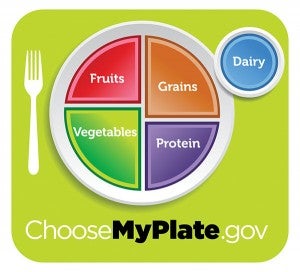Heart healthy food is on the grill
Published 1:54 pm Friday, May 16, 2014
Dietician’s Digest by Emily Schmidt
Grilling food outdoors is a wonderful joy of summertime. I would bet many Minnesotans especially appreciate barbecuing because though our summer days are long our summer season is short. Of course, grilling your food outdoors during the winter is very possible; it just happens to be much more pleasant when the weather is warm and sunny. 
While the traditional barbecue foods — hamburgers, steak, brats and hot dogs — may make your belly happy, the same can’t be said for your heart.
Take a look at the average barbecue meal. I’m thinking a hamburger and hot dog — because, sometimes, how can you choose? — complete with all of the fixings: potato salad, chips, baked beans and tasty beverages. You tend to see a lot of saturated fat (the artery-clogging type), carbohydrates, sodium and calories. That’s not to say there’s anything wrong with these foods — everything in moderation after all — but if you’re the type of person who is grilling nearly all of their summer meals outdoors, it might be a good idea to switch things up.
For instance, perhaps one night grill the traditional hamburger meal, but the next experiment with grilling fish and some vegetable kabobs. If you have heart disease, diabetes, obesity or other health conditions, your body will thank you. If you don’t have any of these conditions, you’re taking a great step in preventing them from happening.
Here are some tips based on recommendations from the American Heart Association for a healthier spin on outdoor grilling:
• Try your hand at grilling fish. Fish contains unsaturated fat, the kind that your heart prefers, and many types are high in heart-healthy omega-3 fatty acids. Salmon, trout and herring are some of the best sources of omega-3s. Get creative with seasoning: try basil, dry mustard, lemon juice, oregano, thyme or a combination of various herbs and spices.
• Go for skinless chicken breasts. This is another great way to cut back on saturated fat. Experiment with garlic, rosemary, parsley, tarragon or other herbs and spices or simply go with some good-old barbecue sauce. Try making burgers with ground turkey or chicken, and add some diced onions to the meat for extra flavor.
• Choose your cuts of meat wisely. For the healthiest cuts of red meat or pork, look for the words “loin,” “sirloin” or “round.” Instead of “prime” for beef, look for “choice” or “select.” Keep in mind that the American Heart Association also recommends no more than six ounces of meat or fish daily. That’s about the size of two decks of cards for the entire day.
• Use a rack, so that the fat drips away from the meat.
Besides using the above tips, also take the MyPlate guidelines into consideration when planning your barbecues. MyPlate, a nutrition guideline from the United States Department of Agriculture, recommends one-quarter of your plate as your protein source, one-quarter a starch or whole grain, and the other half fruits and non-starchy vegetables. A three-ounce chicken breast, one-cup portion of grilled potatoes, a generous portion of grilled asparagus, and a dessert of grilled pineapple would be a perfect example. Get creative with grilling fruits and vegetables — they are low-calorie, high-fiber and antioxidant-rich choices that will bring your meal a few notches up in health.
Albert Lea resident Emily Schmidt is a registered dietitian at Mayo Clinic Health System in Albert Lea. She grew up in Rose Creek and enjoys cooking, reading and spending time outdoors with family.






